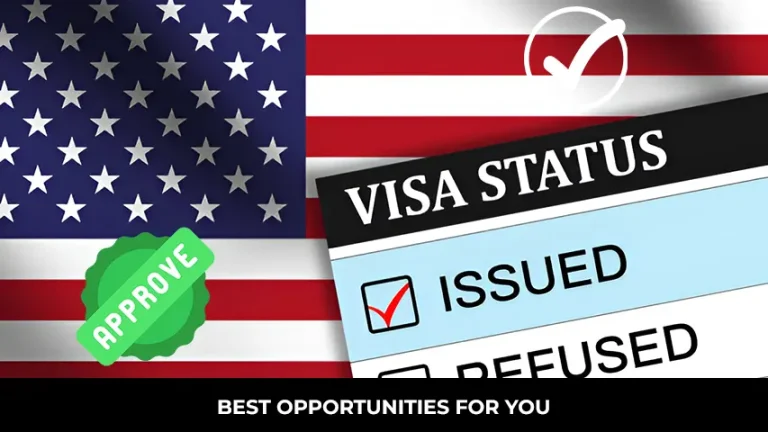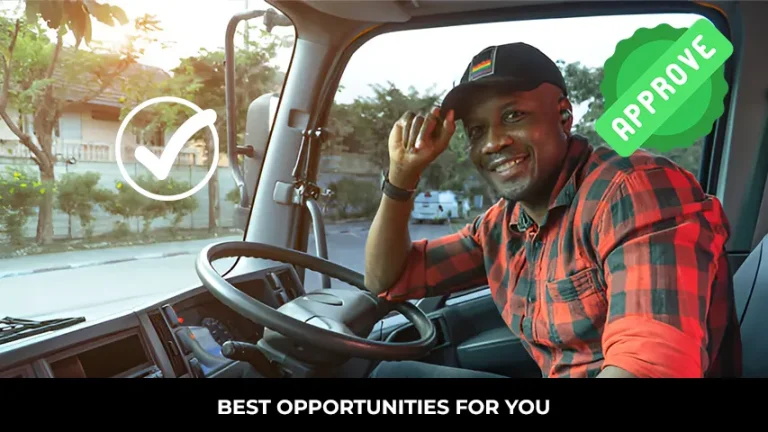Migrate to Australia without a Skilled Occupation
How to Migrate to Australia without a Skilled Occupation
Migrating to Australia is a dream for many, but what if you don’t have a skilled occupation? The good news is that it’s still possible.
In this guide, we’ll explore various pathways, visa options, and practical tips for those looking to move Down Under without a skilled job.
Let’s dive in and see how you can turn your Australian dream into reality.
What Are Your Visa Options for Non-Skilled Workers?
Australia offers several visa options for non-skilled workers, catering to different circumstances and needs. If you’re wondering about your eligibility, let’s break down some of these options.
One of the primary pathways is the Family Sponsorship Visa. If you have a family member who is a permanent resident or citizen of Australia, they can sponsor you.
This option doesn’t require you to have a specific job skill, making it a viable route for many.
Another possibility is the Humanitarian and Refugee Visas. These are designed for individuals facing persecution or dire circumstances in their home countries.
Although this pathway is more specific, it provides an opportunity for non-skilled migrants to settle in Australia.
How to Navigate Australian Migration Pathways
Navigating Australian migration pathways can seem daunting, but with the right information, you can find the best route for your situation. Start by researching the different visa subclasses and their requirements.
The Visitor Visa (subclass 600) allows you to stay in Australia for up to 12 months. While it’s not a long-term solution, it provides a temporary residency option and a chance to explore further opportunities.
For those considering study, the Student Visa (subclass 500) lets you live in Australia while pursuing an educational course.
Post-study, you might be eligible for a Temporary Graduate Visa (subclass 485), which allows you to gain work experience in Australia.
Understanding Work Visa Alternatives
If you’re unable to apply for a skilled worker visa, don’t worry—there are alternatives. For example, the Working Holiday Visa (subclass 417) allows young people from eligible countries to work and travel in Australia for up to a year.
Additionally, the Temporary Skill Shortage Visa (subclass 482) lets employers sponsor you even if your occupation isn’t on the skilled list, provided they can demonstrate a genuine need for your role.
Exploring these alternatives can open up opportunities you might not have considered. It’s all about finding the right fit for your circumstances.
Can You Migrate Without Specific Job Skills?
Absolutely, you can migrate to Australia without specific job skills. One of the most straightforward ways is through the Family Sponsorship Visa, as mentioned earlier.
If you have a partner, parent, or child who is an Australian citizen or permanent resident, they can sponsor your visa application.
Another pathway is through humanitarian programs. These are tailored for individuals who face significant hardships in their home countries.
If you fall under this category, the Australian government provides various support mechanisms to help you settle in.
Remember, it’s not just about the skills you have but also about the connections and circumstances that can pave the way for your migration journey.
Meeting Australia Immigration Requirements
Meeting Australia immigration requirements is essential for a successful application. Each visa category has specific criteria, so understanding these is crucial.
For family sponsorship, you’ll need to prove your relationship with the sponsor and that they can financially support you. For humanitarian visas, you’ll need to provide evidence of the persecution or hardship you’re facing.
Additionally, all applicants must meet health and character requirements. This often involves medical examinations and police checks to ensure you pose no risk to Australian society.
Exploring Temporary Residency in Australia
Temporary residency in Australia can be a stepping stone to permanent residency. The Visitor Visa (subclass 600) and the Working Holiday Visa (subclass 417) are excellent starting points.
While these visas don’t provide a long-term solution, they allow you to experience life in Australia and explore further opportunities.
During your stay, you can network, find potential job prospects, and gather the information needed to apply for a more permanent visa.
Temporary residency options also give you time to understand the local job market and integrate into Australian society, making the transition smoother.
Discover Permanent Residency Options
Securing permanent residency in Australia without a skilled occupation can be challenging, but it’s possible through certain visa streams.
The Partner Visa (subclass 820/801) allows you to live in Australia if you are in a genuine relationship with an Australian citizen or permanent resident. This pathway not only provides residency but also paves the way for Australian citizenship.
Parent Visas (subclass 103 and 143) are another option if you have children who are Australian residents. Although processing times can be lengthy, these visas offer a route to permanent residency without the need for specific job skills.
Navigating Australian Immigration Policies
Australian immigration policies are designed to manage the flow of migrants and ensure the system benefits the country. Staying updated with these policies is crucial for a successful migration journey.
Policy changes can impact visa eligibility criteria, processing times, and application procedures.
Regularly checking the official Australian immigration website or consulting with a migration agent can help you stay informed and adapt to any changes.
Understanding these policies will help you prepare a stronger application and increase your chances of success.
Is Partner or Family Sponsorship an Option?
Yes, partner or family sponsorship is a viable option for non-skilled migration to Australia.
If you have a spouse, de facto partner, or family member who is an Australian citizen or permanent resident, they can sponsor your visa application.
For partner visas, you’ll need to demonstrate a genuine and ongoing relationship. This might involve providing evidence such as joint bank accounts, rental agreements, and photographs together.
Family sponsorship requires your sponsor to prove their relationship with you and their ability to support you financially.
These pathways are excellent for those without specific job skills, allowing you to build a life in Australia based on personal connections.
Leveraging Regional Migration Schemes
Regional migration schemes offer another pathway for those without skilled occupations. These programs are designed to encourage settlement in less populated areas of Australia.
The Regional Sponsored Migration Scheme (subclass 187) and the Skilled Work Regional (Provisional) Visa (subclass 491) are examples of visas that facilitate regional migration.
Although they typically target skilled workers, there are pathways for family members and those willing to invest or establish businesses in regional areas.
Living in regional Australia can provide a unique lifestyle and the opportunity to integrate into close-knit communities, making it an attractive option for many migrants.
Overview of Australian Visa Subclasses
Australia has a variety of visa subclasses catering to different needs and circumstances. Understanding these can help you identify the right one for your situation.
| Visa Subclass | Description |
|---|---|
| Subclass 600 | Visitor Visa – Allows short-term stays for tourism or visiting family. |
| Subclass 417 | Working Holiday Visa – For young people from eligible countries to work and travel. |
| Subclass 500 | Student Visa – For studying full-time in Australia. |
| Subclass 820/801 | Partner Visa – For those in a relationship with an Australian citizen or resident. |
| Subclass 187 | Regional Sponsored Migration Scheme – For regional employer sponsorships. |
| Subclass 491 | Skilled Work Regional (Provisional) Visa – For skilled work in regional areas. |
These subclasses highlight the diversity of options available, ensuring there’s a pathway for nearly every scenario.
Employer Sponsorship Alternatives Explained
Employer sponsorship is a common route for skilled migration, but there are alternatives for non-skilled workers.
If you have an employer willing to sponsor you, the Temporary Skill Shortage Visa (subclass 482) might be an option, even for roles not on the skilled occupation list.
Another alternative is the Employer Nomination Scheme (subclass 186), which, in some cases, allows for positions that aren’t strictly skilled but meet certain criteria set by the employer and the government.
Exploring these alternatives can provide opportunities for employment-based migration without the need for high-level qualifications.
Are There Skilled Migration Points System Exemptions?
Yes, there are exemptions to the skilled migration points system. Some visa categories, such as the Partner Visa (subclass 820/801) and Family Sponsorship Visas, do not rely on the points system.
Additionally, humanitarian and refugee visas also bypass the points system, focusing instead on the applicant’s circumstances and need for protection.
Understanding these exemptions can help you find a suitable pathway that doesn’t require accumulating points based on skills, qualifications, and work experience.
Understanding English Language Proficiency Requirements
English language proficiency is a key requirement for many Australian visas. For non-skilled visas, the requirements can vary.
For family-sponsored visas, basic proficiency is often sufficient. You’ll need to take a recognized English test, such as IELTS or PTE, and achieve a score that demonstrates your ability to communicate effectively in everyday situations.
Humanitarian and refugee visas may have more flexible requirements, considering the applicant’s background and circumstances.
Meeting these requirements is essential for ensuring you can integrate into Australian society and navigate daily life with ease.
State or Territory Nomination Programs
State or territory nomination programs are designed to attract migrants to specific regions. These programs can be an excellent option for those without skilled occupations.
Each state or territory has its own criteria and incentives, often focusing on regional development and population growth.
For instance, the Northern Territory offers nomination for certain visas if you commit to living and working there for a specified period.
Researching these programs can reveal unique opportunities tailored to your situation, providing a pathway to residency through regional commitment.
Seeking Migration Agent Assistance
Navigating the Australian immigration system can be complex, and seeking migration agent assistance can simplify the process.
Migration agents are knowledgeable about current policies, visa options, and application procedures.
A registered migration agent can help you understand which visa suits your circumstances, prepare your application, and ensure all requirements are met.
They can also provide advice on overcoming potential obstacles and improving your chances of success.
Investing in professional assistance can save time, reduce stress, and increase the likelihood of a positive outcome.
Exploring Australian Citizenship Pathways
Achieving Australian citizenship is the ultimate goal for many migrants. While the journey may start with temporary or permanent residency, several pathways can lead to citizenship.
After holding permanent residency for a certain period, you can apply for citizenship. This typically involves demonstrating your commitment to Australia, passing a citizenship test, and meeting residency requirements.
For those on family-sponsored or humanitarian visas, the pathway to citizenship can be more direct, reflecting the government’s recognition of your special circumstances.
Conclusion
Migrating to Australia without a skilled occupation is entirely possible, thanks to the diverse range of visa options and pathways available.
Whether through family sponsorship, regional schemes, or humanitarian programs, there are numerous routes to explore.
Understanding the requirements and seeking professional advice can help you navigate the process successfully. So, take the first step towards your Australian dream today!






